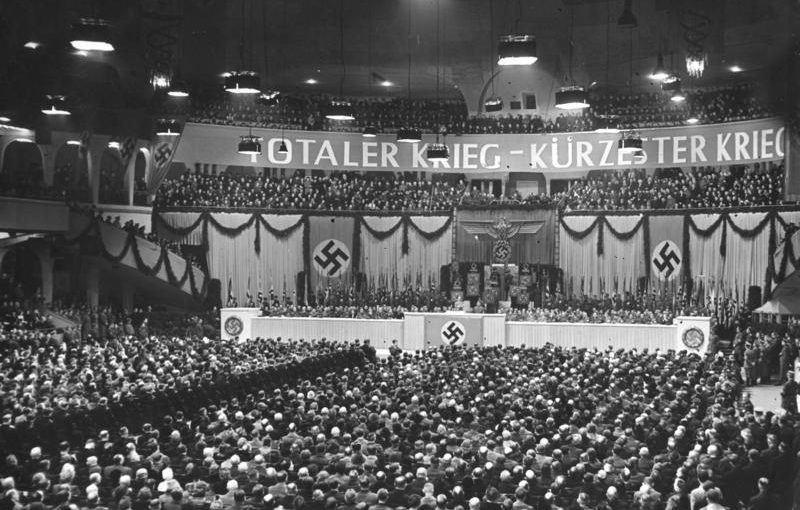Helping students to understand how audiences can be manipulated by speeches
In-depth analysis of a propaganda speech in order to identify and be able to spot elsewhere the many ways in which people can be manipulated.
The purpose of the strategy is to take time to look at a speech in two forms, as text and spoken. Close analysis of a longer piece of propaganda (such as a speech) in two forms allows students to focus on exactly how propaganda is used to manipulate an audience. Students identify the methods of manipulation being used and are then equipped to be able to spot these in other similar types of propaganda.
Students read a text and think: what was the purpose of the speech? What content is focused upon? What rhetorical devices are deployed? What is the tone and emphasis of the source?
Class discussion then follows, enabling students to reflect upon their answers and encourage students to identify where facts are presented, distorted, omitted. The more contextual historical knowledge students have, the more effective this strategy will be.
Students then watch the same speech. This time they make brief notes about the presentation, including body language, tone, emotion and pauses. As a class there is then discussion about how these aspects increase the impact of the propaganda upon the audience.
Students then write a guide for younger students. ‘Be aware! How to make sure you are not manipulated by propaganda in a speech.’
Analysing a Nazi speech: How did Goebbels manipulate his audience in February 1943?
Activity 1: Students will read and evaluate text of the speech ‘Nation, Rise Up, and Let the Storm Break Loose’ by Joseph Goebbels (1943). As they read it they should identify how the propaganda minister used propaganda on his audience. They will want to think: what was the purpose of the speech? What content is he focusing upon? What rhetorical devices does he deploy? What is the tone and emphasis of the source? In class discussion reflect upon their answers and also encourage students to identify where facts are presented, distorted, omitted.
Activity 2: Watch the 1943 Sportpalast Speech. Ask students to make brief notes about the presentation, including body language, tone, emotion and pauses. Then discuss how these aspects increase the impact of the propaganda upon the audience.
Activity 3: Albert Speer, also a leading Nazi, reported talking with Goebbels afterwards:
“Except for Hitler’s most successful public meetings, I had never seen an audience so effectively roused to fanaticism. Back in his home, Goebbels astonished me by analysing what had seemed to be a purely emotional outburst in terms of its psychological effect — much as an experienced actor might have done. He was also satisfied with his audience that evening. ‘Did you notice? They reacted to the smallest nuance and applauded at just the right moments. It was the politically best-trained audience you can find in Germany.’” Ask students: how far do they agree with Albert Speer’s report about the speech?
Activity 4: Ask students to write a guide for younger students. ‘Be aware! How to make sure you are not manipulated by propaganda in a speech.’
Resources needed: Your students need access to a text copy and a filmed version of the speech. These are widely available and currently can be located at: http://research.calvin.edu/german-propaganda-archive/goeb36.htm and https://www.youtube.com/watch?v=dhAbZZ3liUI
The context to this activity: 1943: the Turning Point Year. As a background to this lesson students need knowledge about the progress of the WWII from 1939 to 1943. They understand that 1943 is often described as the turning point year.
This long speech by Joseph Goebbels is also his most famous. It was delivered on 18 February 1943 to a large, but carefully selected audience in Berlin. The battle of Stalingrad had ended, and the true seriousness of the war was evident to everyone. Goebbels wanted the speech to build popular enthusiasm for the war, and also to convince Hitler to give him greater powers in running the war economy. Goebbels had used the concluding quotation of the speech (“Now, people rise up, and let the storm break loose!”) in earlier speeches, for example a campaign speech before the Nazi takeover of power on 6 July 1932.
Image: Bundesarchiv, Bild 183-J05235 / Schwahn / CC-BY-SA 3.0.
